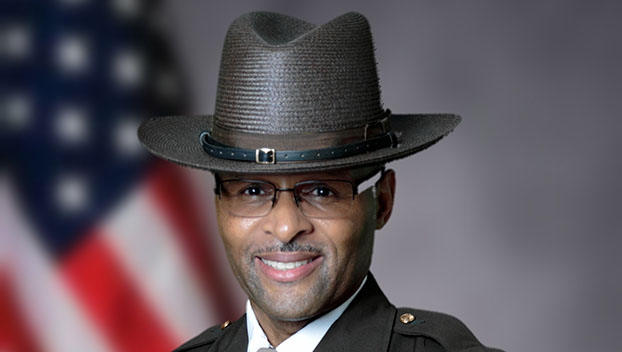Townsend wins re-election as Lunenburg sheriff in tight race
Published 8:00 am Thursday, November 16, 2023

- Arthur Townsend Jr.
|
Getting your Trinity Audio player ready...
|
One week after Election Day, we have a winner. Lunenburg County Sheriff Arthur Townsend Jr. has the votes to retain his office, the result of one of the tightest races local officials have seen in years.
As of Tuesday morning, Townsend had a 32 vote lead over challenger Michael J. Fowlkes II, 1,844 to 1,812. R.G. “Ronnie” Long, Sr. had 139 votes and there were seven write-ins.
These numbers reflect all absentee mail-in ballots with those counted Monday. However, General Registrar Carolyn Parsons said Tuesday morning that the county’s Electoral Board had not completed its work on the provisional ballots. But to be clear, Electoral Board Secretary Oliver Wright said the board had only 15 provisional ballots to review.
SO WHAT CAUSED PROBLEMS?
Originally on Election Night, there was some confusion in the race, as state results seemed to show Fowlkes as the winner. Lunenburg officials said the new state reporting system caused problems.
Both Parsons and Wright said as they worked to input results after the polls closed, the new State Board of Elections software froze up.
Wright explained this meant the numbers in the reporting system people were viewing on the state website were incomplete. This was particularly problematic in the extremely close sheriff’s race.
“They have a new way to put them in,” Parsons said. “That kind of froze up.”
Wright believes the new software was “overwhelmed” as localities across Virginia worked to enter their numbers.
“We didn’t get that straightened out for two days,” he said.
Word on the street indicated that a winner had been declared in the tight race and even that the wrong person had been announced as the winner.
“No announcement was made about a winner,” Wright said, noting officials were focused on dealing with getting the numbers reported to the state.
Any word that was spreading on who had won the sheriff’s race was done by “someone on their own and wasn’t accurate,” Wright said.
With 20 years on the county’s Electoral Board, Wright said the sheriff’s race is the closest local election he’s seen.
With the move to all of the electronic systems in elections, he said part of the problem elections officials contend with is the general public believing they should have the results within hours of the polls closing.
“You know, it’s all done electronic,” he said people contend. “Why aren’t these results available at 10 o’clock on Election Night?”
PREPARING NUMBERS
He said it’s not that simple. A lot of work goes into preparing numbers to report to the State Board of Elections.
Wright explained results are no longer reported as a simple sum. They have to be broken down by votes cast on Election Day, in early voting, and by absentee and write ins.
From there, he said the tallies must be further broken down by race with votes assigned by precinct. These numbers are then audited before being entered into the reporting system.
With the close race, there is the additional question of whether there will be a recount.
Virginia law allows for a recount to be requested if the difference between candidates is no more than 1%, he said. The State Board of Elections handbook for general registrars explains this difference is calculated between the two candidates only without the numbers from others in the race.
As of Tuesday morning before the provisional ballots were processed, Townsend’s 32 vote lead over Fowlkes put that difference at .875%.
“There is no automatic recount,” Wright said.
This decision on seeking a recount falls to the candidate who lost the race.
“The losing candidate must petition the appropriate court to request a recount,” the recounts step-by-step instructions published by the State Board of Elections states. “For local offices, the petition must be filed in the circuit court of the county or city in which the candidate being challenged resides.”
A recount court is then created if the petition is filed correctly, the instructions state. It will consist of three judges, including the chief judge of the court where it is filed and two additional judges to be named by the chief justice of the State Supreme Court. The recount court would oversee the process.
If the tallies do fall within the 1% margin, Wright said a candidate then has 10 days from when the election is certified to request a recount.
According to state code, the locality pays for a recount if the difference between candidates is less than .5%. However, the candidate requesting the recount is responsible for the cost if the difference falls between the .5% and 1% margin.



